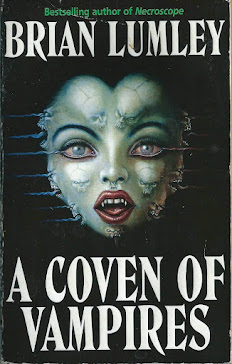Wednesday, March 30, 2022
Kris Kool English language edition
Monday, March 28, 2022
Critical Mass of Cool
Saturday, March 26, 2022
Thoroughly Ripped with the Fabulous Furry Freak Brothers
Thursday, March 24, 2022
A Certain Girl live
by Warren Zevon
Capitol Theatre, Passaic, New Jersey, October 1, 1982
Tuesday, March 22, 2022
1941 by Dave McMacken
Saturday, March 19, 2022
Floating Shelves from Wayfair
Thursday, March 17, 2022
Book Review: Darby O'Gill and the Good People
Book Review: 'Darby O'Gill and the Good People' by Herminie Templeton Kavanagh
4 / 5 Stars
Here at the PorPor Books Blog, we like to celebrate St. Patrick’s Day by reviewing or showcasing a fiction or nonfiction book that deals with Ireland and the Irish. For St. Patrick's Day 2022, our selection is 'Darby O'Gill and the Good People' by Herminie Templeton Kavanagh.
Kavanagh was born in the UK in 1861 and later migrated to the United States, where she wrote stories for children based on Gaelic folklore. These stories first were published in McClure’s Magazine in 1901-1902 before being compiled into the book ‘Darby O’Gill and the Good People’ in 1903. Kavanagh wrote a second book, ‘Ashes of Old Wishes and Other Darby O'Gill Tales’, which was published in 1926.
The story goes that Walt Disney, upon making trips to Ireland, conceived of the idea of a film involving a leprechaun and used Kavanagh’s books as the inspiration. Disney’s 1959 movie ‘Darby O’Gill and the Little People’ was well received and boasted some of the more advanced special effects for its time.
This trade paperback edition of ‘Darby O’Gill and the Good People’ (182 pp.) was published by One Faithful Harp Publishing Co., Scranton, PA, in 1998. It contains the stories ‘Darby O’Gill and the Good People’, ‘Darby O’Gill and the Leprechaun’, ‘The Convarsion of Father Cassidy’, ‘How the Fairies Came to Ireland’, ‘The Adventures of King Brian Connors’, and ‘The Banshee’s Comb’.
The stories are set in rural Ireland in the late 19th century and involve the eponymous Darby, his wife Bridget, the King of the Fairies, Brian Connors, and various other personages. Most of the stories are comic in nature. However, the final entry, ‘The Banshee’s Comb’ does a good job of endowing itself with a ‘spooky’ sensibility, involving as it does Irish beliefs about the dead……and the dangers visited upon those who find themselves out and about on Halloween night.
Author Kavanagh renders much of her dialogue phonetically, in a kind of Gaelic-accented English, so readers will encounter words like ‘dacint’ (decent), ‘giont’ (giant), ‘kittle’ (kettle), ‘divil’ (devil), etc., etc. These phonetic renderings make for slow going at first, but after a while become a bit more tolerable.
What makes the book work as a retelling of Gaelic folklore is Kavanagh’s care in depicting the myriad characters as ‘real’ people. Darby O’Gill is hardly a heroic figure, but rather, a self-centered, at times pig-headed man who will grumble and protest en route to grudgingly doing the right thing. As well, his wife, friends, and acquaintances have their own foibles and faults, these often serving to drive storylines (as Bridget’s careless boasting at a women’s sewing circle triggers the events of ‘The Banshee’s Comb’). For the people of Darby O'Gill's Ireland, superstitious beliefs are an integral part of their agrestic way of life.
I finished ‘Darby O’Gill’ aware that Kavanagh had imparted a subtle undertone to her book. She depicts her human characters as the common people of a society still recovering from periods of great privation. For all its jollity and humor, the book presents poverty, sickness, and death as commonplace among rural people of limited means. While Darby’s desire for material wealth may at first seem particularly greedy and grasping, there is an understanding that the actions of the Darby and his fellow Irishmen are driven by the presence of a ‘racial memory’ of famine and impoverishment. Indeed, when Darby has a wish granted, and strolls into the main hall of his own grand castle, Kavanagh takes care to describe the abundant foodstuffs arrayed on the dining tables.
Summing up, those with a fondness for the folklore of the British Isles and Celtic myths, as well as younger readers, will find ‘Darby O’Gill and the Good People’ a short but engaging read.








































































